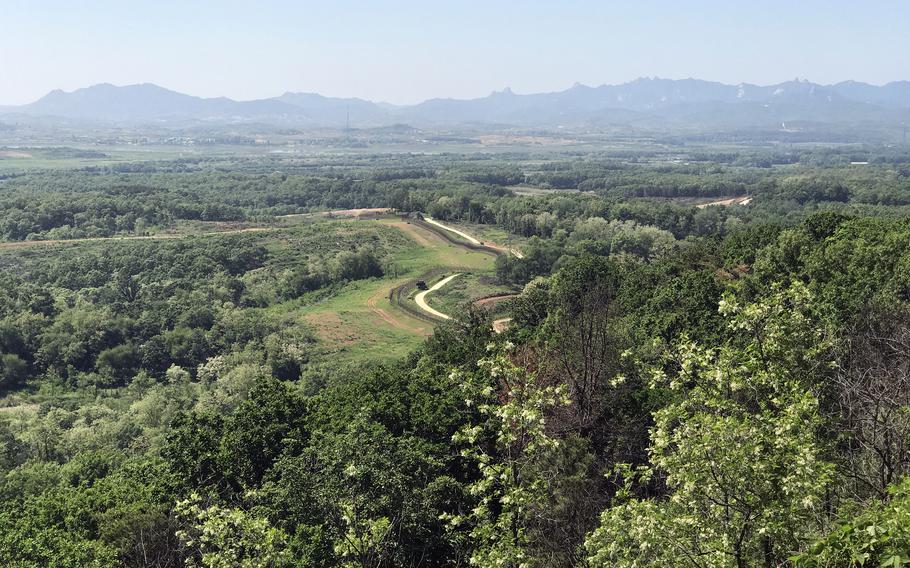
A portion of the Demilitarized Zone between North and South Korea is pictured on May 24, 2017. (Aaron Kidd/Stars and Stripes)
A South Korean soldier accidentally fired a machine gun round near the border with the North on Wednesday, marking the second such incident in less than a month, according to the South’s military.
The discharge occurred around 5 p.m. at a guard post in the western section of the Demilitarized Zone, the Joint Chiefs of Staff said in a text message to reporters Thursday.
The military said it immediately notified North Korean authorities and observed “no unusual activity” in response.
South Korea’s Ministry of National Defense did not respond to multiple phone calls seeking further information Thursday.
The round was fired from a K6 heavy machine gun, South Korea’s variant of the U.S. military’s M2 .50-caliber weapon, according to a report by Yonhap News Agency. The K6 can fire up to 600 rounds per minute at a maximum range of 8,100 yards, according to the U.S. Army’s Training and Doctrine Command.
The heavily fortified DMZ, which is 2½ miles wide and stretches about 160 miles across the Korean Peninsula, is dotted with guard posts maintained by both sides. These posts, often concealed by dense foliage, are designed to detect and deter potential incursions.
Wednesday’s incident is the latest in a series of accidental discharges involving the K6.
On April 27, a South Korean soldier accidentally fired a single round from one of the guns at another guard post within the DMZ. That round struck a reinforced door, likely preventing it from crossing into North Korean territory, according to the military.
A similar incident occurred on Jan. 28, 2023, when a South Korean soldier fired four rounds from a KR-6 — a remotely operated variant of the K6 — near the border.
On May 2, 2020, soldiers from both Koreas exchanged gunfire across the border. While no injuries were reported, a subsequent United Nations Command found that both sides had violated the armistice agreement by firing weapons at each other. The investigation was inconclusive in determining which side initiated the exchange.